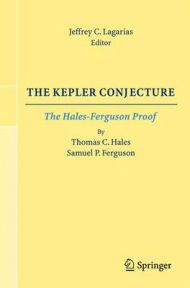The Kepler conjecture, one of geometry's oldest unsolved problems, was formulated in 1611 by Johannes Kepler and mentioned by Hilbert in his famous 1900 problem list. The Kepler conjecture states that the densest packing of three-dimensional Euclidean space by equal spheres is attained by the cannonball" packing. In a landmark result, this was proved by Thomas C. Hales and Samuel P. Ferguson, using an analytic argument completed with extensive use of computers.This book centers around six papers, presenting the detailed proof of the Kepler conjecture given by Hales and Ferguson, published in 2006 in a special issue of Discrete & Computational Geometry. Further supporting material is also presented: a follow-up paper of Hales et al (2010) revising the proof, and describing progress towards a formal proof of the Kepler conjecture. For historical reasons, this book also includes two early papers of Hales that indicate his original approach to the conjecture.The editor's two introductory chapters situate the conjecture in a broader historical and mathematical context. These chapters provide a valuable perspective and are a key feature of this work.Thomas C. Hales, Mellon Professor of Mathematics at the University of Pittsburgh, began his efforts to solve the Kepler conjecture before 1992. He is a pioneer in the use of computer proof techniques, and he continues work on a formal proof of the Kepler conjecture as the aim of the Flyspeck Project (F, P and K standing for Formal Proof of Kepler).Samuel P. Ferguson completed his doctorate in 1997 under the direction of Hales at the University of Michigan. In 1995, Ferguson began to work with Hales and made significant contributions to the proof of the Kepler conjecture. His doctoral work established one crucial case of the proof, which appeared as a singly authored paper in the detailed proof.Jeffrey C. Lagarias, Professor of Mathematics at the University of Michigan, Ann Arbor, was a co-guest editor, with G bor Fejes-T th, of the special issue of Discrete & Computational Geometry that originally published the proof.
In Collection
#7554
Read It:
Yes
#7554
Read It:
Yes
Mathematics
|
|
||||||||||
